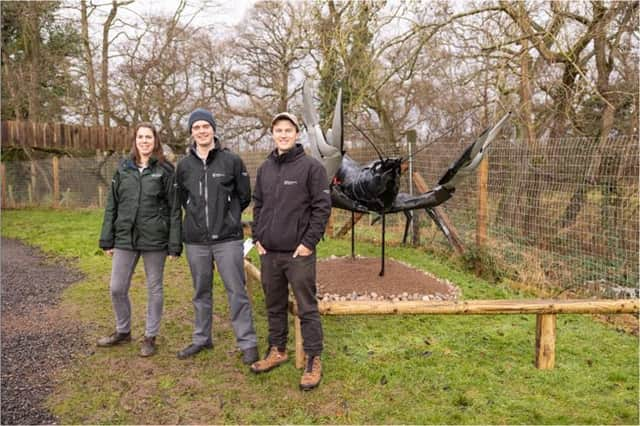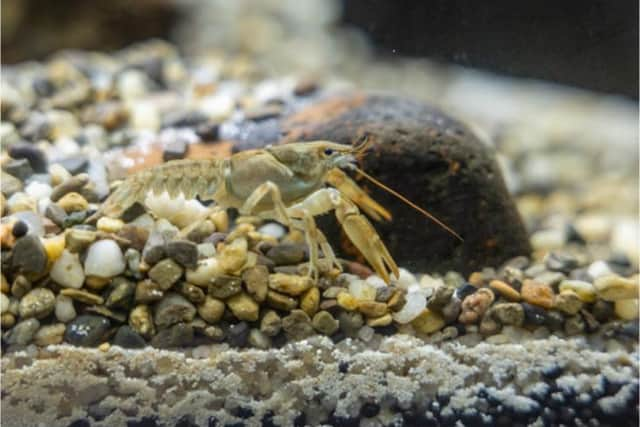Project launched to safeguard the future of native crayfish in Northumberland


A 12ft long native crayfish sculpture commissioned by Northumberland Rivers Trust was unveiled at Northumberland Zoo on New Year’s Eve to celebrate the start of its captive breeding programme.
The programme aims to breed and release the native species into Northumberland’s rivers and lakes.
Advertisement
Hide AdAdvertisement
Hide AdIt builds on work to boost native numbers and prevent the spread of the invasive American signal crayfish which is bigger, more aggressive and out-competes the native white clawed crayfish.


The partnership - including the Northumberland Zoo, Environment Agency, Northumberland Rivers Trust and National Trust - is now calling on local people to ‘Check, Clean, Dry’ their clothing and equipment after visiting local rivers to avoid transferring the invasive species.
Northumberland has some of the country’s last strongholds of white-clawed crayfish, with the Wansbeck and Aln having some of the best remaining populations in Europe.
Pete Kerr, Northumberland Rivers Trust, said: “While Northumberland’s rivers have some of the best remaining populations of native crayfish in the UK, the invasive signal crayfish are closing in from all sides.
Advertisement
Hide AdAdvertisement
Hide Ad“Many people have never even seen these ‘little lobsters’ but they are amazing creatures that can live up to 10 years and even grow new claws after a fight with an otter. We need to do all we can to protect them otherwise 2022 might be their last year in Northumberland.”
The captive breeding programme is funded by the zoo, Environment Agency and Northumbrian Water’s Branch Out scheme, while the sculpture, created by Ptolemy Elrington of Hubcap Creatures, has been funded by the Northumberland Rivers Trust. In total around £20,000 has been invested.
Maxine Bradley, Northumberland Zoo, said: “The crayfish facility is in the early stages of development and we are currently rearing yearlings and testing the facility. Once our techniques are proven we will introduce breeding vats and begin holding adult crayfish from the local areas.
“The captive bred crayfish can then be reintroduced in association with our partners to help boost local populations and restock areas where they have disappeared.”
Advertisement
Hide AdAdvertisement
Hide AdIf you see any crayfish, alive or dead, leave it where it is and report it to the Environment Agency on 0800 807060. If possible, take close-up photos to help identify the species.